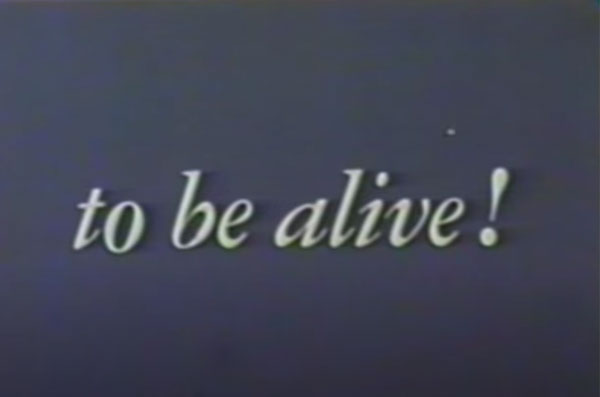
One of the signature events in Disney’s theme park history is the 1964-65 New York World’s Fair. There’s a reason so many obsess over its pavilions. Along with including original versions of attractions like the Carousel of Progress and Great Moments with Mr. Lincoln, they also connect to EPCOT Center. The style and atmosphere of the original Future World attractions spring from World’s Fairs of the ’60s and ’70s. A perfect example is the film To Be Alive! from the New York event.
Presented by S.C. Johnson & Son in the Johnson Wax pavilion, this 18-minute short film appeared in a separated three-screen format. You can still view this film at the Golden Rondelle Theater (transported from the fair!) in Racine, Wisconsin. Its upbeat tone feels similar to Disney’s approach to EPCOT Center and its Circle-Vision films in Tomorrowland. It’s great to have the chance to catch up with a high quality three-screen version of this movie through the National Film Preservation Foundation, though it cannot compare to the original presentation. Let’s take a closer look back at this award-winning and popular film!
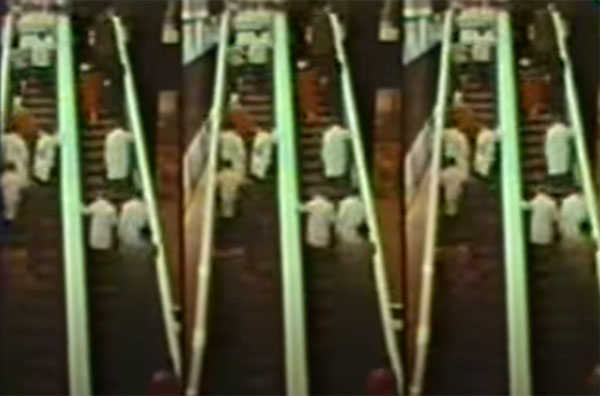
Escaping the Daily Rush
A hectic opening drops us into the stressful daily commute. Fast-paced crowds head to work “in the rush“, according to narrator Robert Fields. Scenes conform to typical gender stereotypes with the dad speeding to work while the mom does housework at the same pace. This set-up depicts stressful horror and then quickly pulls us back to Earth. The action cuts abruptly to a serene pond to remind us of what matters.
Alexander Hammid and Francis Thompson wrote and directed To Be Alive!, and there’s little subtlety to their style here. Thompson was also involved with the legendary IMAX film To Fly! in 1976, and it employs a similar anecdotal approach to human life. That short focused on transportation and its development, and this film tackles a simpler topic. A kid sits by a pond and observes a turtle swimming quietly there. The narrator talks about how our “eyes had just opened” during childhood. How do we regain that joy?
Our story travels around the world but doesn’t identify specific areas or geographical locations. It seems designed to remind us of the connections between cultures, not our differences. It’s a direct, positive way to align people around the world together. This message still hits home for me today during the COVID-19 pandemic. We see kids riding bikes and swinging in the U.S. while children in Africa play music at home. It’s all part of one universal tale of enjoying life and appreciating what we have.
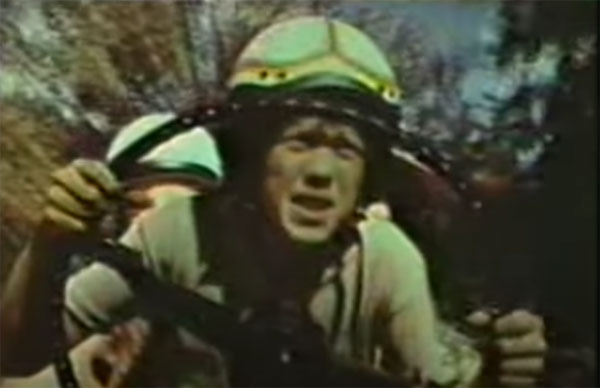
Freedom and Speed!
Our subjects get a bit older and start exploring the world. A city kid takes a prism and uses it to see rainbows everywhere. Another child runs into a church and climbs to the top of a bell tower. The sense of movement increases, and that’s just the set-up for the centerpiece. An exciting sequence gives the audience a POV of kids racing down the streets. They’re using sleds or other vehicles to speed forward, and we’re on board for the ride. I suspect this segment is great fun on the big screen.
Teenagers start playing sports, which could include piloting canoes in Africa or the expected high-school contests in the United States. This freedom extends to dating, as couples pair off and quickly get married. Whoa, let’s slow down a bit here! All kidding aside, we’re basically going through each stage of life quickly. Each step is all part of our freedom to grow up and enjoy what’s possible in this world.
The next step is work, but jobs don’t seem mundane. To Be Alive! depicts the interests of scientists gathering the sun, architects creating a building their minds, and construction workers bringing those dreams to life. Whether it’s art, science, or blue-collar work, everyone is doing their best to create something memorable. It’s an upbeat, powerful way to look at anything we do, even just a typical office job.
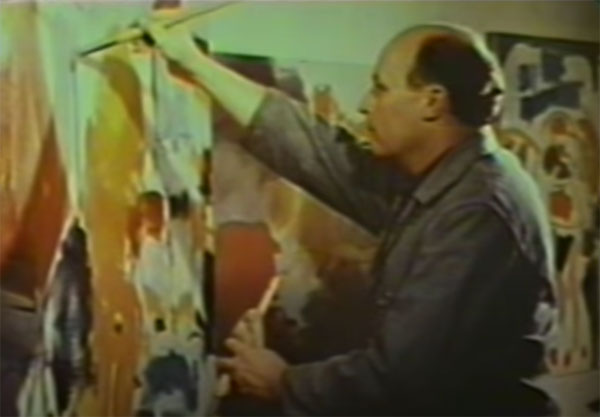
To Be Alive Is a Great Joy
Watching To Be Alive! while at home during a pandemic is a different experience. I’ve spent a lot more time just sitting on our deck or just playing with my girls in the backyard. Shots of people enjoying the little things around the world connects a bit stronger today. The quote “simply to be alive is a great joy” is accompanied with an artist painting and then people ice skating. I don’t want to oversell the impact of an 18-minute film, but it provides a good reminder. It’s a rough time right now, but there are a few bright spots within our current situation.
One of our last stops is Griffith Observatory, where a man observes the stars. He may be all alone but is living his best live while seeking knowledge. That pursuit brings us back to EPCOT Center and the allure of the World’s Fairs; there’s hope of a better tomorrow. It can be tough to ponder while quarantined today, but it’s still there for me. To Be Alive! concludes with a grandfather spotting a frog on a pond with his grandson. We’ve come full circle, and it’s implied we’re seeing the boy from the start all grown up today. It’s a moving way to end a film that sneaks up on you.
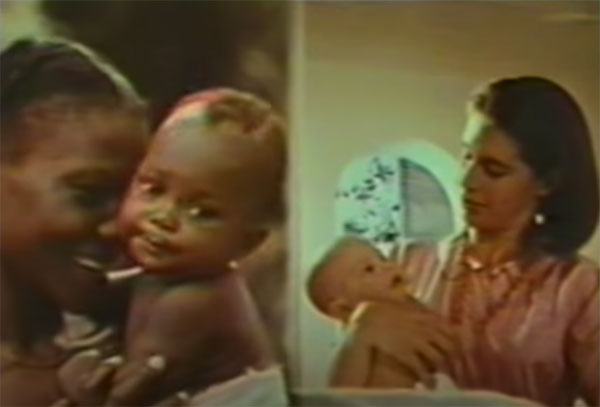
Related Articles: To Be Alive!
Disneyland Goes to the World’s Fair



Dan, found an interesting quote from Graeme Ferguson, co-inventor of IMAX: “Although I was living in New York, I had not yet gone to New York World’s Fair….I didn’t bother visiting the fair until I had to think about Expo 67. That’s when I discovered what Sasha [Alexander] Hammid and Francis Thompson had done with To Be Alive!, which proved to me that multiscreen could be an art.”
That’s a great comment, Martin! I can totally see how “To Be Alive!” would leave that impression, and I’ve only seen it on my home TV. I suspect it was really something with the full-size screens. It’s also interesting how it may have helped inspire IMAX.
A better quality video copy, which restores the three-screen presentation, is now online:
https://www.filmpreservation.org/sponsored-films/screening-room/to-be-alive-1964
That’s great! I’ll check it out soon and update my links.